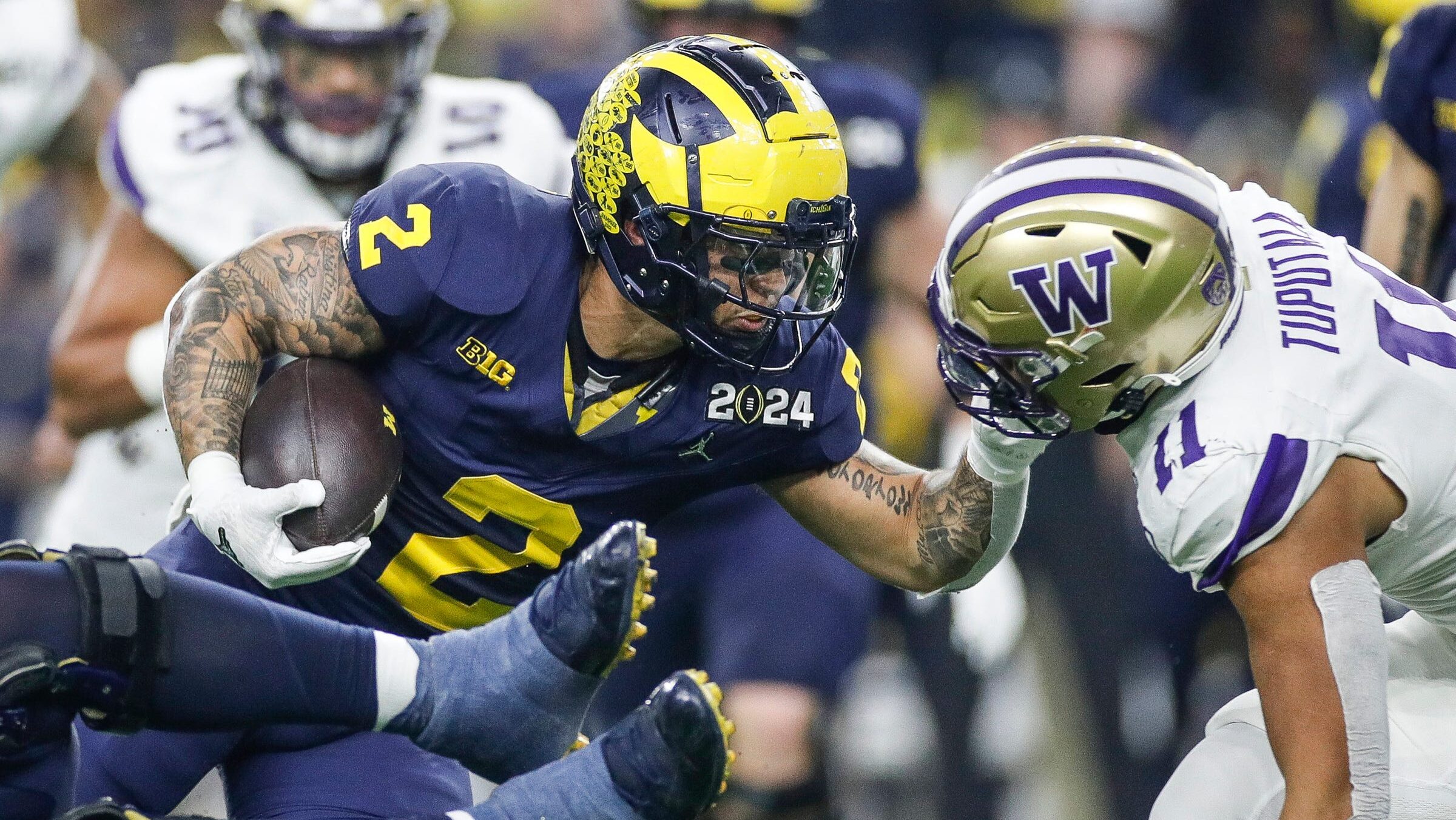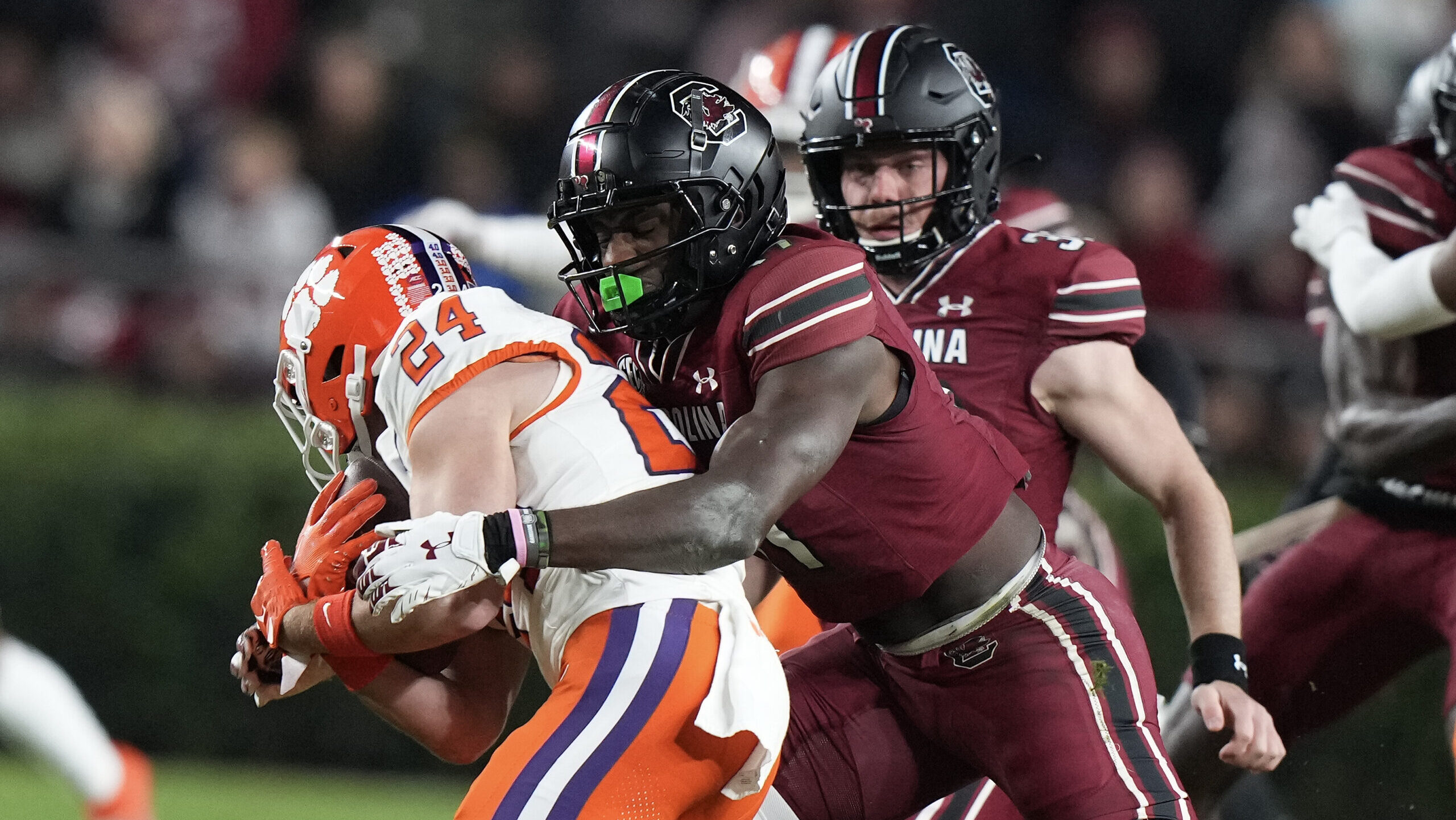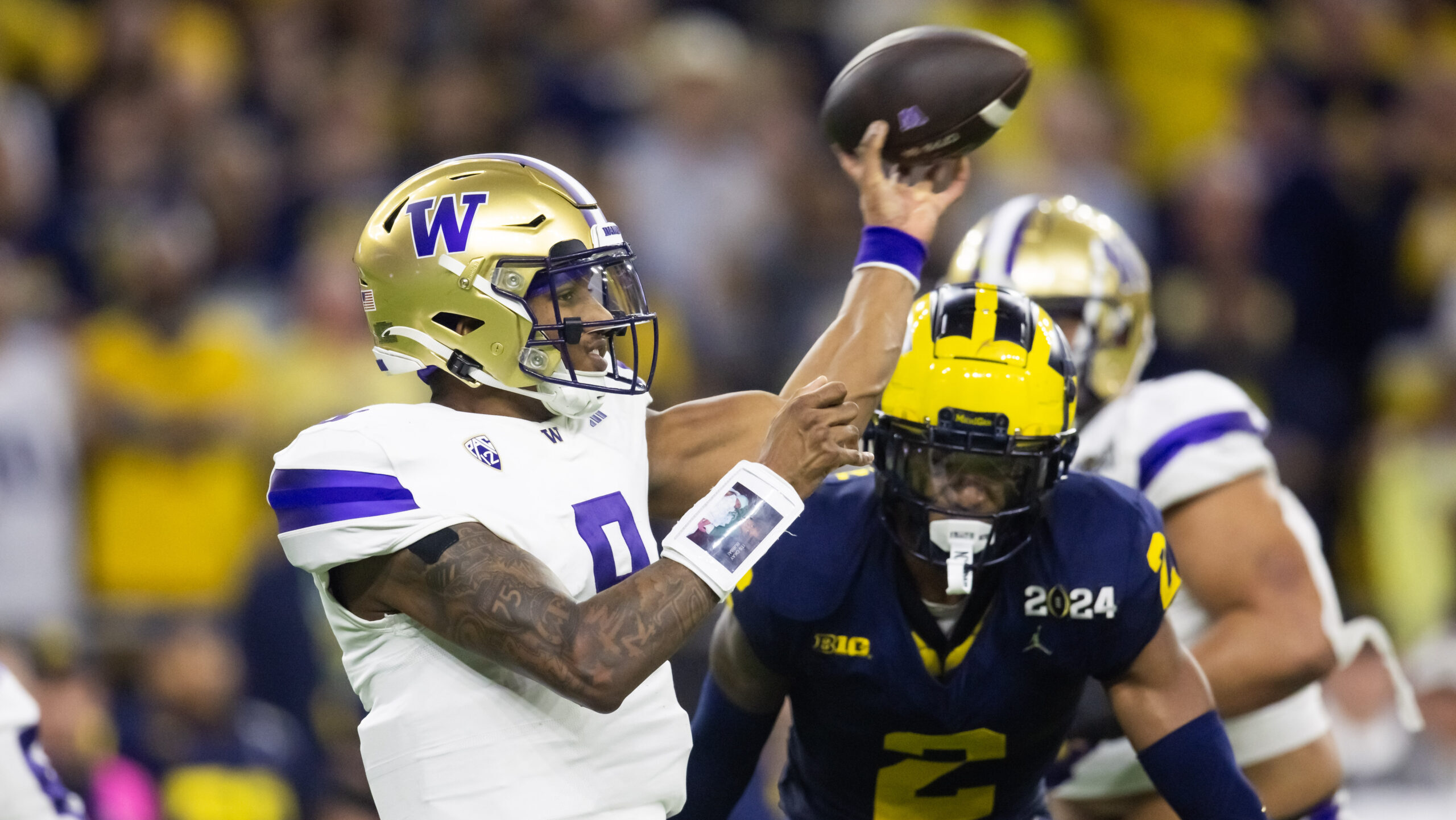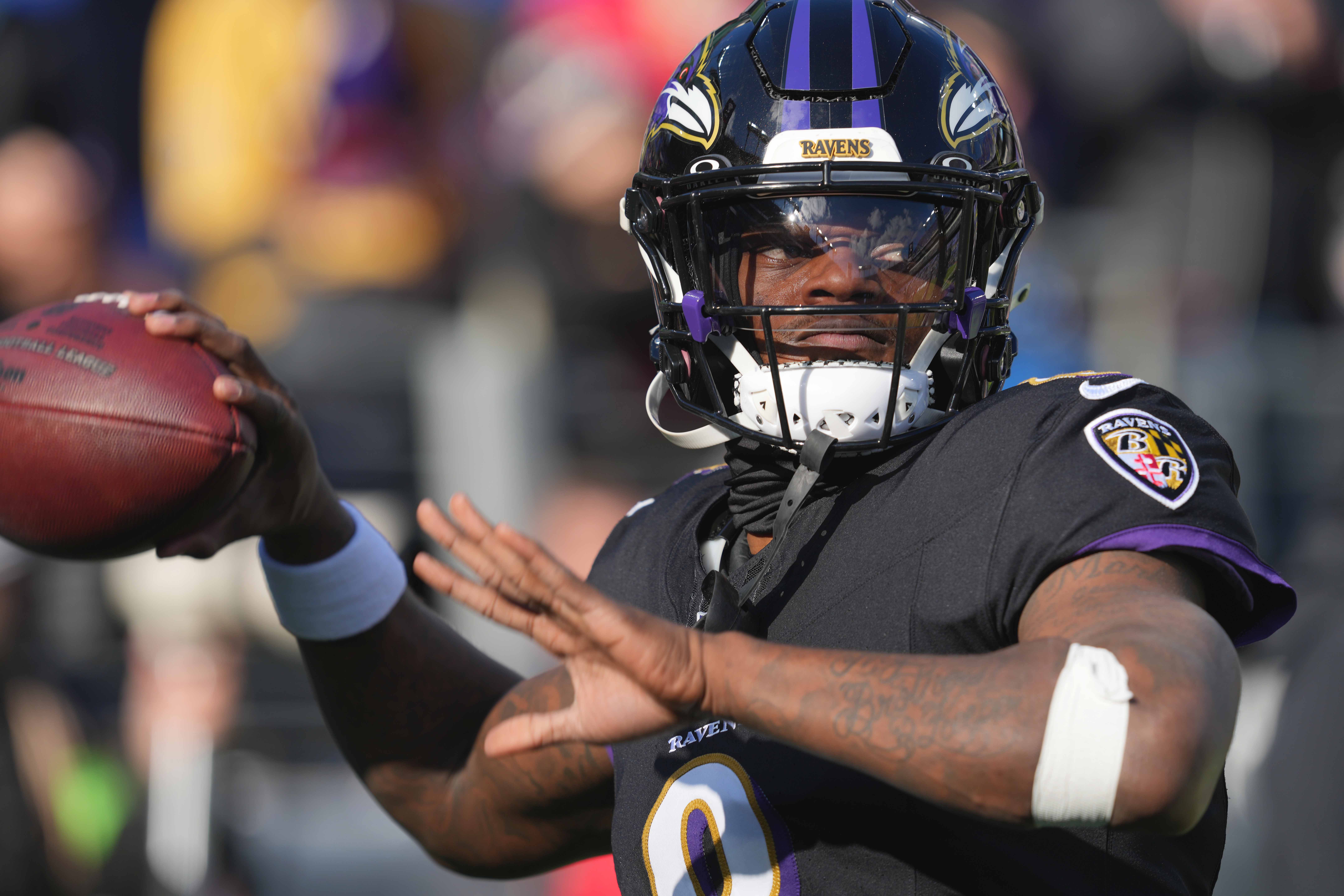Analysis
8/7/23
9 min read
2023 Fantasy Football: Breaking Down 3 Small Gap Backfields
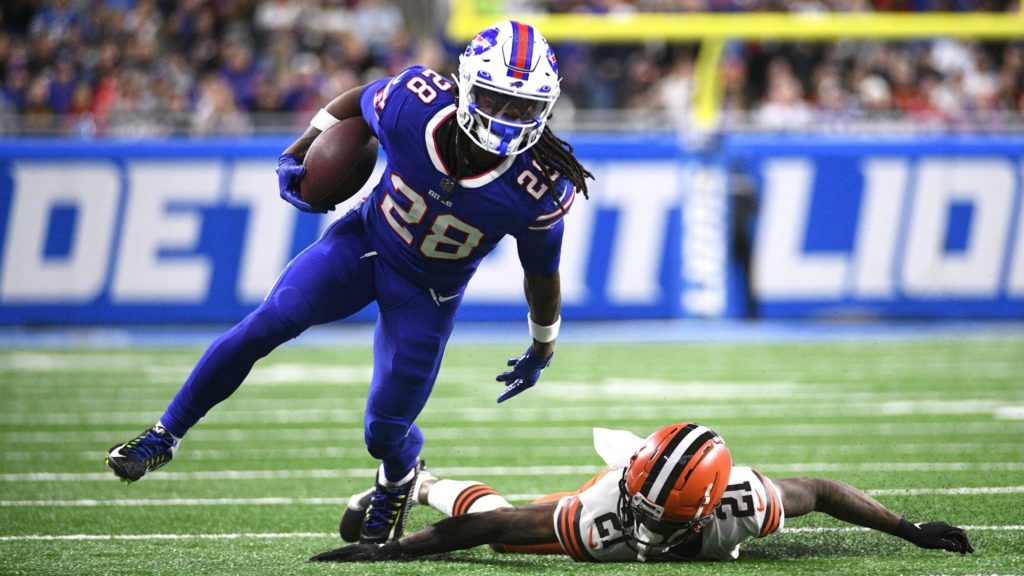
Last time, we discussed big gap backfields and which running backs to target. Now, we’re examining small gap backfields since that typically draws tons of attention.
With ADP increasingly efficient, examining the historical data and underlying metrics can help us identify which running back to prioritize. Let’s look at three small gap backfields and how to play them.
Bills' Backfield
James Cook, RB29, 89 ADP
Damien Harris, RB40, 119.9 ADP
Shortly after Devin Singletary signed a one-year deal with the Houston Texans, former Patriots running back Harris joined the Buffalo Bills. That muddies up the potential breakout season for Cook after some drooling over his receiving potential. Cook peaked as a junior with a 12 percent receiving yardage market share and seven percent in his final college season. That led to top production comparisons of Kenyan Drake and Chris Thompson before Cook's rookie season.
Nyheim Hines suffered an ACL injury, which removed one running back from the Bills' depth chart. The Bills qualify as a small gap backfield, and Cook's early ADP remains palatable with the ambiguity. While it's not massive, the Bills tied for the sixth-biggest difference in running back targets per game in the past two seasons. They threw to their running backs 6.6 times per game, up one target per contest from 2021.
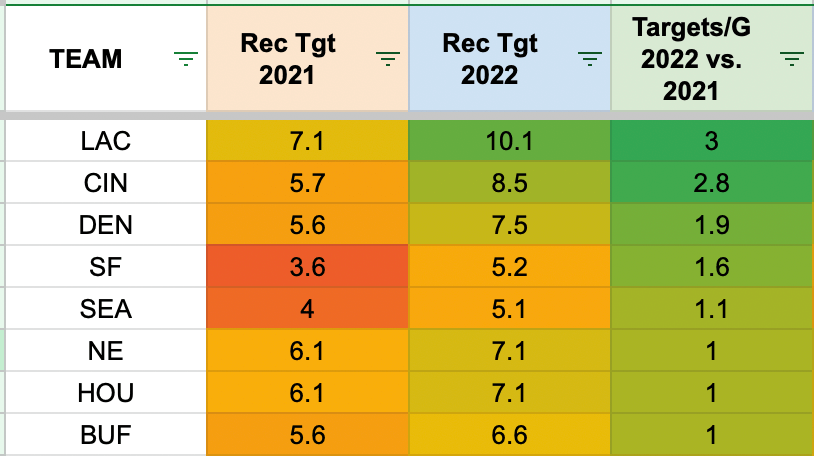
Last season, Singletary garnered a 10 percent target share (No. 20) compared to Cook at six percent. We envision a scenario where Cook's target share bumps closer to the double digits since Harris likely doesn't factor into that role. We typically want efficient players, and Cook made the most of his opportunities while ranking 30th in fantasy points over expectation per game (FPOE/G).
Since Singletary held down a 67 percent snap share, Cook received double-digit carries plus targets four times (25 percent of his games played) with a 23 percent snap share. Ideally, Cook earns more than 50 percent of the snap share in 2023, paired with an increase in opportunity share.
Will Harris Cause a Headache?
Touchdown regression hit hard for Harris after 15 rushing scores in 2021, translating to the seventh-highest FPOE/G. That should've raised red flags heading into 2022 since Harris ranked 30th in expected points per game (EP/G) and 34th in high-value touches. The EP/G formula incorporates high-value touches, which include rushes and receptions inside the 10-yard line. In other words, Harris scored a hefty amount of touchdowns with low-value touches.
We know how the story went as Rhamondre Stevenson dominated the opportunities. Most notably, Stevenson garnered an elite 17 percent target share (No. 4). Since Harris peaked at a seven percent target share in 2022, he doesn't threaten Cook's role as a pass catcher.
Final Takeaways
Targeting the S2 back in a small gap backfield typically led to better win rates in the past two seasons versus the S1. The win rates hovered close for the S1 and S2 backs in 2021. However, the gap in win rate between the S1 and S2 increased in 2022 to 8.8 percent, up 1.5 points from the S1. The historical data suggests we should target Harris in the Bills' small gap backfield.
A few S2 backs from 2022 might be skewing the data, including Tyler Allgeier, Tony Pollard and Stevenson. When debating running backs to target, especially in any points per reception (PPR) format, we should give the edge to the potential pass-catcher. Even if the win rates don't suggest Cook is the choice, he fits the profile. As an RB3, Cook should provide weekly value with projected upside with more snaps and opportunities.
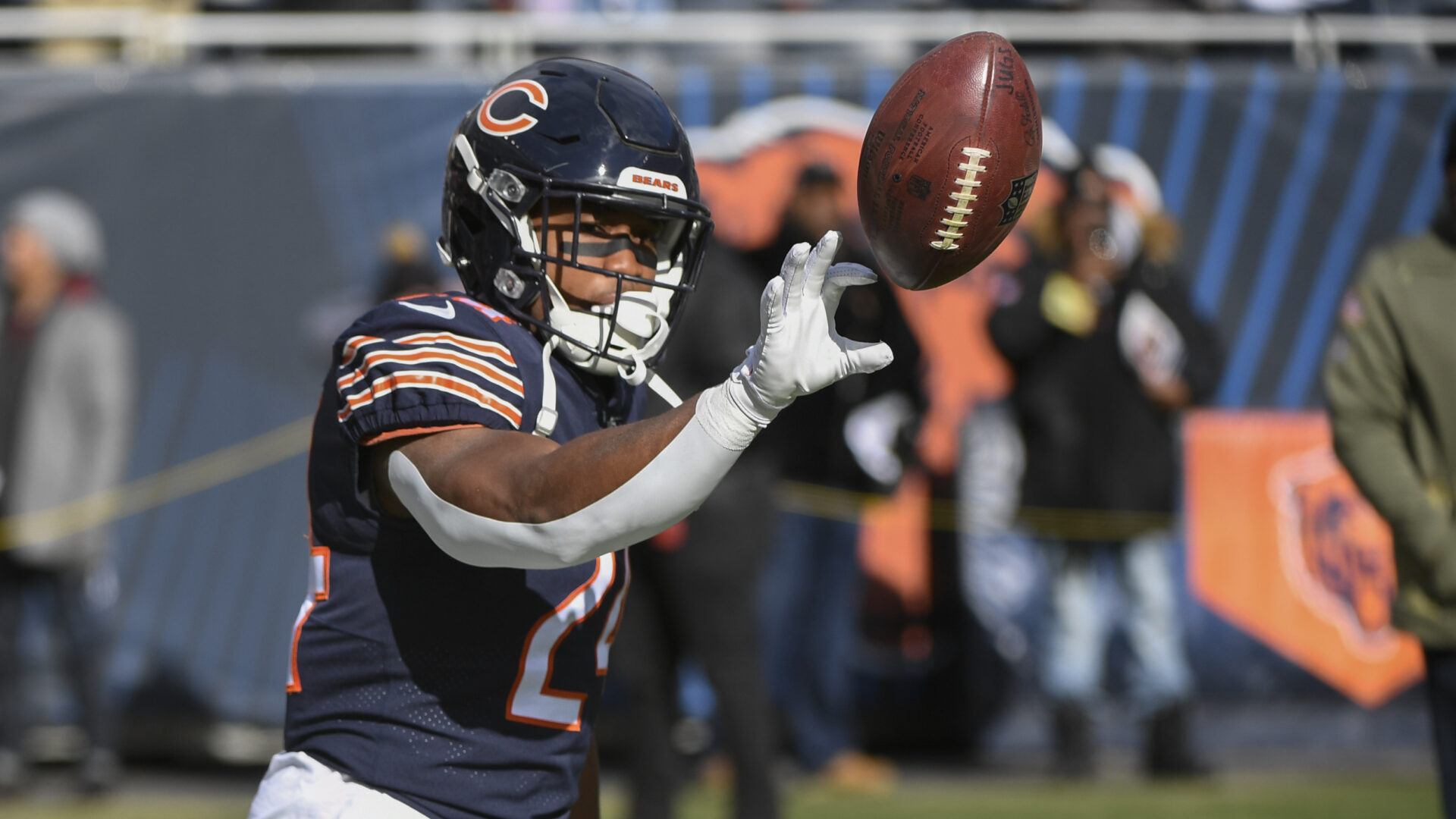
Bears' Backfield
Khalil Herbert, RB39, 117.2 ADP
Roschon Johnson, RB48, 154.9 ADP
D'Onta Foreman, RB50, 159.1 ADP
David Montgomery held down the Chicago Bears' backfield for four seasons as an all-around running back. From 2019-2022, Montgomery averaged the 15th-most EP/G (14), indicating a well-rounded role as a rusher and receiver, similar to Josh Jacobs (15.7 EP/G).
For the current Bears' small gap backfield, they likely won't have someone matching the workload of Montgomery alone. The tricky part with the Bears' backfield involves their quarterback QB Justin Fields, who accounts for 32 percent of the team's rushing attempts (No. 2) behind Jalen Hurts in 2022.
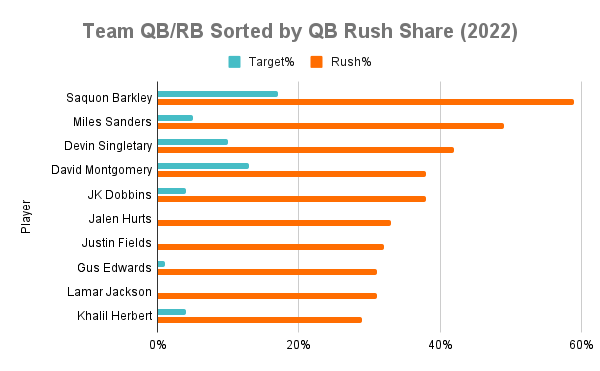
Unsurprisingly, Montgomery had a career-low rush share of 38 percent after three straight seasons of 61 percent or higher. Herbert ate into Montgomery's workload and accounted for a 29 percent rush share on a team that ranked first in rush rate (56 percent). In 2021, Fields still boasted a healthy rush share of 21 percent, with Herbert at 24 percent. That data is notable because Herbert's rush load should rise, though it's debatable whether it jumps more than 60 percent like Montgomery.
Herbert & Johnson's Advanced Stats
Like Cook in Buffalo, Herbert's efficiency and advanced stats reeled us into the profile. Herbert ranked 20th in FPOE/G and fourth in yards per carry (YPC). He had the seventh-most yards after contact per attempt (YAC/Att) among running backs with a minimum of 50 carries.
Herbert fights for extra yards by breaking and avoiding tacklers, with a 20.2 percent broken plus missed tackle rate (BT+MT/Att), ranking eighth. That's a rushing profile to target. Though ideally, we witness a slight uptick in receiving opportunities. Unfortunately, Herbert hardly produced as a receiver, given his 0.7 yards per route run (YPRR) on 12 targets.

Johnson, Bijan Robinson's backup at Texas, also flashed juicy advanced stats like Herbert. I wrote about Johnson before the NFL Draft as a running back with standout metrics. Among college backs, Johnson ranked 11th in YAC/Att and first in BT+MT/Att.
Like Herbert, Johnson evades tacklers and creates yards after contact. The Bears likely reward Johnson's tough running with a healthy rushing load as a rookie. Johnson only garnered 21 targets but averaged a decent 1.7 YPRR (No. 67 out of 200 qualified running backs).
Final Takeaways
If there's a buy one get one free vs. a buy two get a third free, why not opt for the trio? That feels like what the Bears landed on, as they added Foreman to the duo of primary rushers to their small gap backfield.
Foreman fits right in after playing on the Panthers, who ranked fifth in rush share last season. He creates yards after contact, averaging 2.8 YAC/Att (No. 17). However, Foreman has the second-lowest BT+MT/Att (9.4 percent) behind Caleb Huntley (9.2 percent) among the leaders in YAC/Att.
Foreman goes right behind Johnson in ADP, indicating the market believes it's a toss-up on which S2 running back to target behind Herbert. Given the projected high rushing volume, one or multiple of these backs will have weekly value in a shared committee.
Thankfully, it's a low risk related to their ADP since they typically provide above-average win rates. Due to his age and potential, Johnson is probably the preferential S2 back on the Bears.
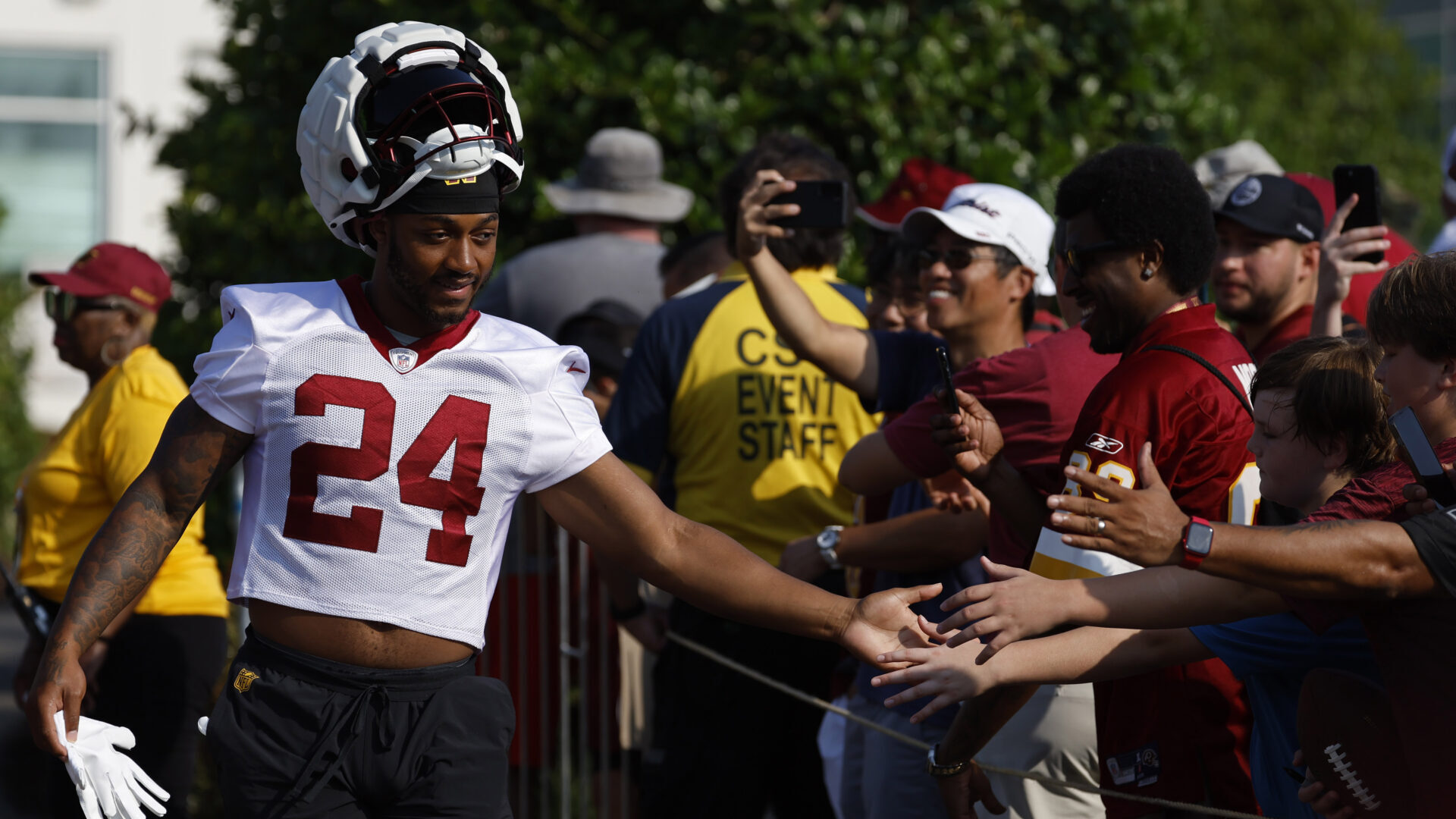
Commanders' Backfield
Antonio Gibson, RB32, 98.7 ADP
Brian Robinson, RB37, 109.8 ADP
Chris Rodriguez, RB110, 216 ADP
The ADP for the Washington Commanders' backfield remains quite depressed, with the S1 back averaging the third lowest among the group. Gibson heads up the small gap backfield, and Robinson is about a round behind. Only the Bears and Dolphins S1 back goes after the Gibson, indicating potential value if we land the correct option. Eric Bieniemy joining the Commanders as the offensive coordinator adds to the intrigue.
Take some of this data lightly because the offensive environment should change in 2023. Last season, the Commanders ranked 10th in rush rate (46 percent), third in plays per game (69) and had the eighth-slowest pace of play (27.7 seconds per snap). For reference, the Kansas City Chiefs ranked 26th in rush rate, 13th in plays per game (66) and 15th in seconds per snap (26.5).
While having an elite quarterback in Patrick Mahomes dictates how they run the offense, there's a slight chance the Commanders attempt to lean more on the passing game.
Gibson vs. Robinson
After touchdown efficiency as a rookie with 12 as a rusher, Gibson improved in Year 2. He totaled the eighth-most PPR while averaging 14.9 PPR/G (No. 17) in 2021. Gibson garnered a career-best target share in 2022 at 12 percent (No. 13), but Robinson ate into the rushing opportunities.
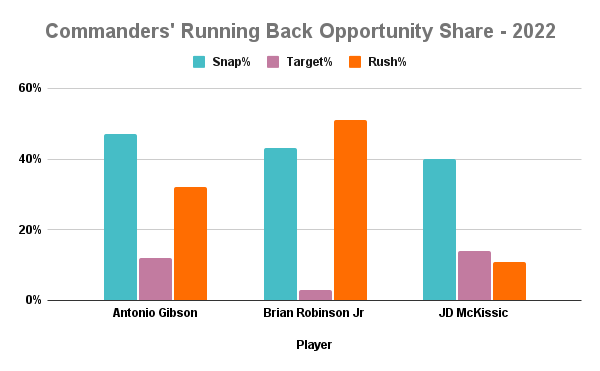
After dominating the rush share among the team's running backs, Gibson's rush share went from 57 percent (2021) to 32 percent (2022). Unsurprisingly, Robinson accounted for 51 percent of the team's rush share with minimal receiving opportunities. Robinson edged Gibson in YAC/Att (2.4 vs. 2.0) and BT+MT/Att (13 percent vs. seven percent).
Gibson continues to flash his receiving skills, which Robinson lacks. Last season, Gibson ranked 15th in YPRR and 22nd in yards after the catch per reception (6.5). With J.D. McKissic gone, Gibson probably adds to his target share potential.
That isn't speculation; the numbers bear it out. On third downs last year, Gibson averaged 4.3 routes per game, with McKissic at 8.6 and Robinson toward the bottom at 0.42. Assuming Gibson runs more of the routes on third down, we can project target opportunities too.
Final Takeaways
Gibson projects to garner work as a receiver, and Robinson expects to eat more than half of the rushing volume. On the one hand, they can provide weekly value as an RB3, but either back will cause headaches for fantasy managers. Typically, I lean toward the pass catcher in Gibson but don't overinvest in the Commanders' backfield since the team projects to be one of the bottom five offenses.
Keep tabs on rookie Chris Rodriguez, who received some off-season buzz with praise from Bieniemy. Rodriguez peaked in 2021 at Kentucky, mainly as a rusher. He posted a career-best 64 percent running back dominator, yet only a two percent receiving yardage market share.
His advanced stats point toward a tough running profile, evidenced by his 3.8 YAC/Att (No. 17) and 27.4 percent BT+MT/Att (No. 21). That likely means he falls into the early-down grinder bucket that would fill in for Robinson if needed.
Follow The 33rd Team Podcast Network on Spotify and Apple Podcasts.

